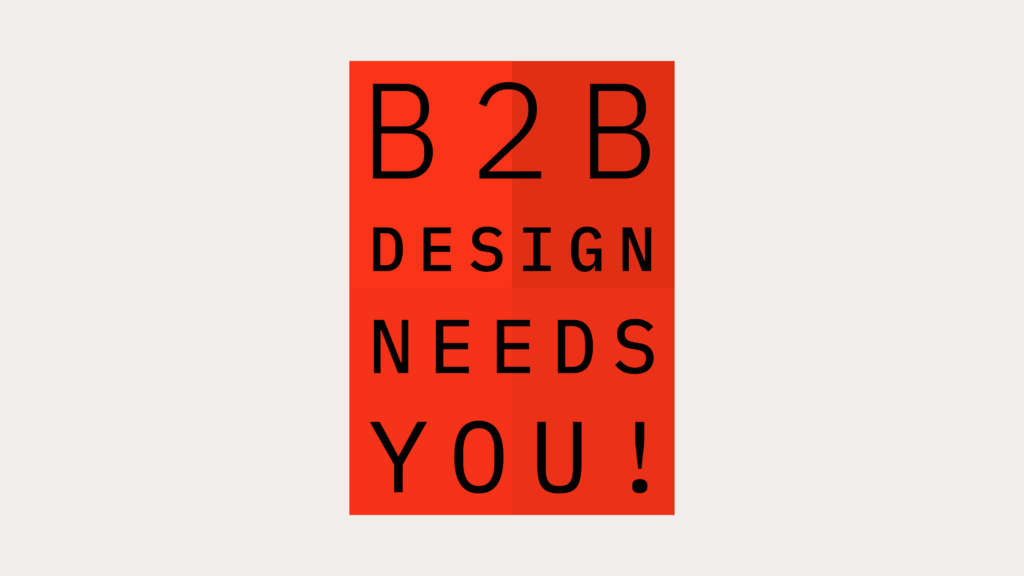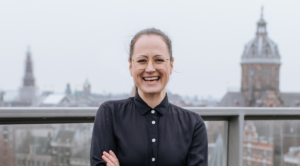by Ross Sweetmore, Senior Designer at The Frameworks
If you ask graphic design graduates what excites them about working in the field, most will say it’s the opportunity to design for products and brands that are ingrained in popular culture. The cereal we buy at the supermarket, the commercials we see on TV, the brands we wear.
In short: B2C design.
As for me? What excites me is the opportunity to work on projects for companies that make the world work. It’s less about the logo on the trainers and more about how they arrived on your doorstep.
There’s a satisfying magic to discovering how these seemingly invisible systems work. And, as a designer, you can play a part in helping them function a little more smoothly, reach a new audience or secure investment.
I’m talking about B2B design.
Why don’t more designers feel excited about B2B when they graduate? Well, B2C design is seen as being more fun, more creative, more experimental – and it’s true, to an extent. More than three quarters of B2B marketers say their effectiveness is impacted by a lack of investment. Low investment is often paired with reluctance from stakeholders to take risks, meaning safer designs are favoured over bolder choices.
Those of us working in B2B must become advocates for the untapped creative potential and exciting work opportunities within our industry if we want to appeal to graduates and potential customers.
We, as B2B designers, can also learn a lot from our friends in B2C. Here are four key lessons.
Inject emotion and humanity
B2C brands can be underdogs. Youthful. Provocative. B2C design appeals to a consumer’s personality by making them feel. Take Oatly – the plant-based company has never shied away from expressing its strong opinions and the brand’s design embodies and spreads the brand message.
In contrast, B2B brands often feel that they need to be more objective because their target audiences are other businesses. And the audience’s considerations are different: budget, reputation, capacity, business strategy.
But they’re still human.
And you can still inject emotion into your design. The recent “Time better spent” campaign for Basware, a Finnish fintech company, by Amigo Partnership hinges on the central idea that the service will save you time. “Time better spent” doing what you love. It’s effective because it taps into a shared emotion: that time is precious.
Create meaningful experiences
Audiences want meaningful experiences. Think about how you want your audience to experience your brand and then design around this understanding to create content that’s right for your audience.
A long, detail-heavy white paper can be made more enticing by pairing it with an immersive 3D online experience. Promoting descriptive, technical content with more engaging assets like illustration and animation lets your audience choose how they consume the information.
The same goes for customer success stories. Audiences might not remember a case study that took them ten minutes to read, but a short human-centred, cinematic film will stick in their memory.
Inspire loyalty and pride, internally and externally
Great design doesn’t just impact customers. Internally, it can inspire pride and ownership in your company.
A beautifully designed brand identity gives employees the tools to confidently and boldly communicate your brand. Coherent design principles throughout the business, from email signatures to the office interior, can fuel employees’ passion for their job and improve productivity.
Externally, beyond marketing and branding, design is important for the whole user experience. Whether that’s the website or customer service, the better the user experience, the stronger the customer loyalty will be.
Disrupt
A creative advantage gives you a competitive advantage.
In an increasingly saturated B2B marketplace, it’s even more important to be disruptive to get noticed. The more brands that are willing to experiment and challenge the status quo by investing in creativity, the more the creative mindset will shift across the sector.
And thanks to AB testing, being disruptive doesn’t necessarily mean taking creative risks. You can test an unexpected image against a more conservative one and see which performs better. You can try a more creative colour choice or a more provocative copy line and see if they resonate. It’s not just a stab in the dark, it’s a collaborative process of understanding your audience and what they respond to.
Creative toolbox
Design is everywhere, it’s not just your logo or company website. It’s the space where you work. It’s how smooth your customer experience is. But most importantly, it’s how people feel when they hear your name.
Ultimately, B2B and B2C brands want the same thing: to appeal to their audiences and stand out from the crowd. B2B design may have some work to do to catch up with the creativity of the B2C world, but the lessons are there, and the risks are worth taking.
Who knows, you might even inspire future grads to answer the question, “what type of brands do you want to work for?” with “B2B”.








